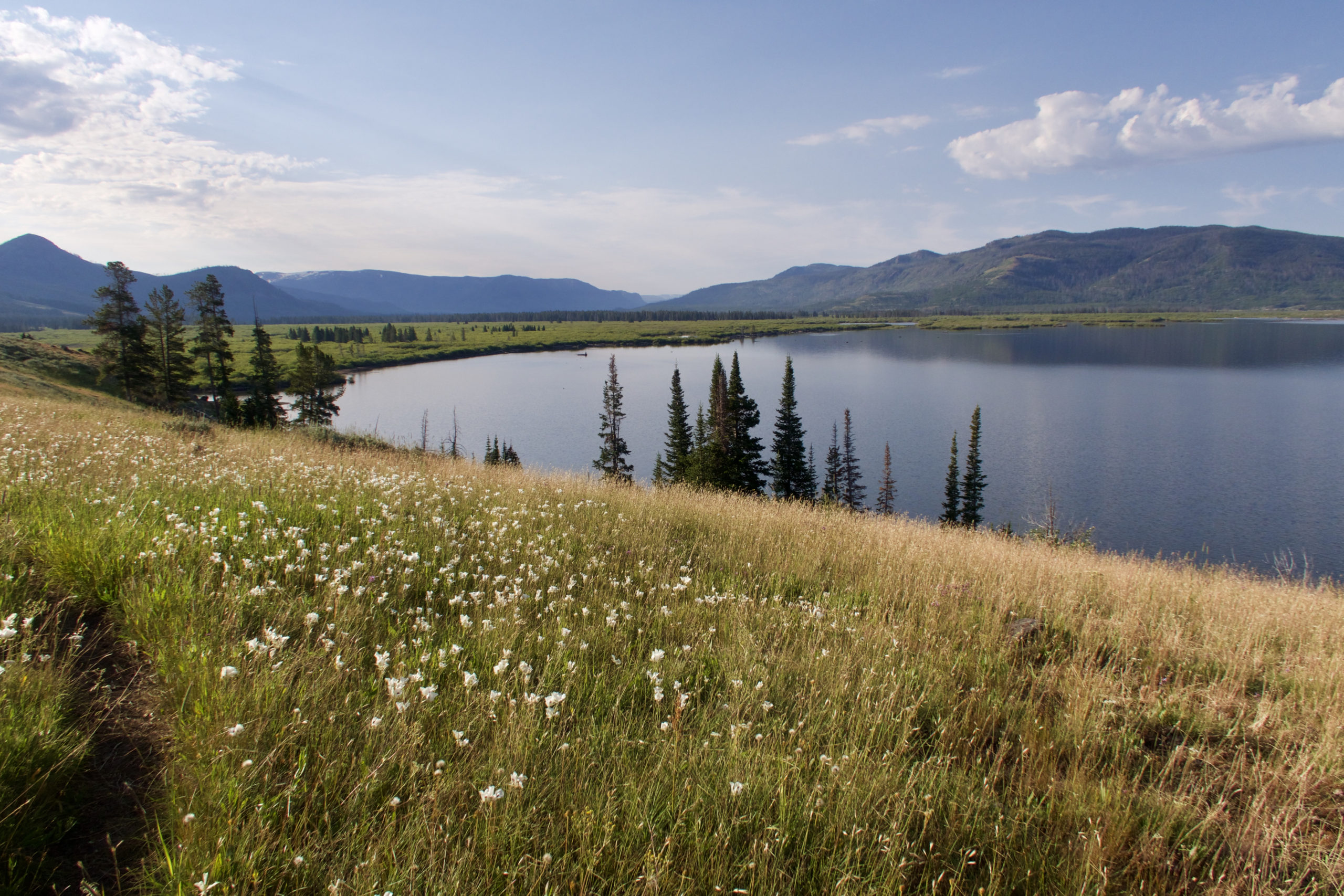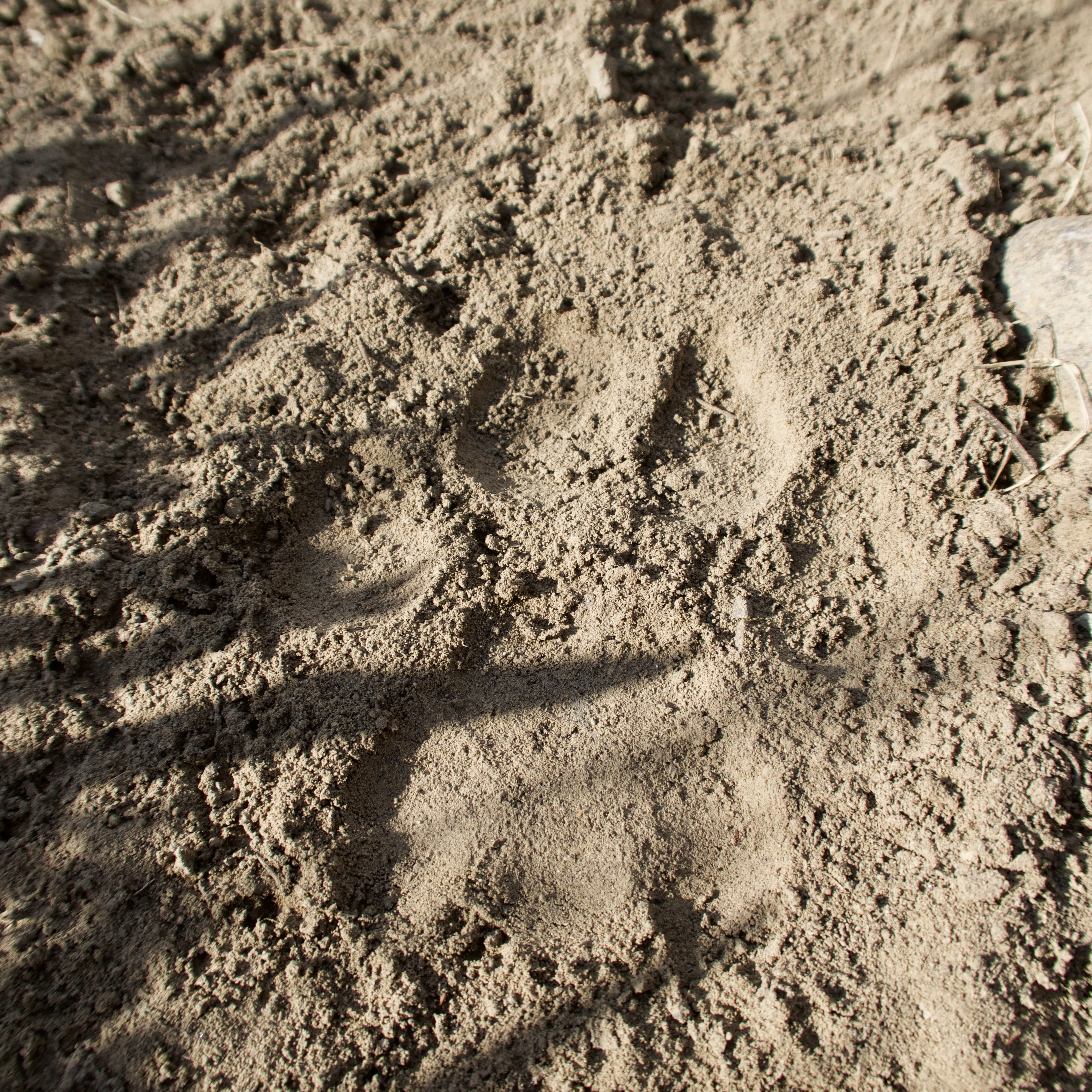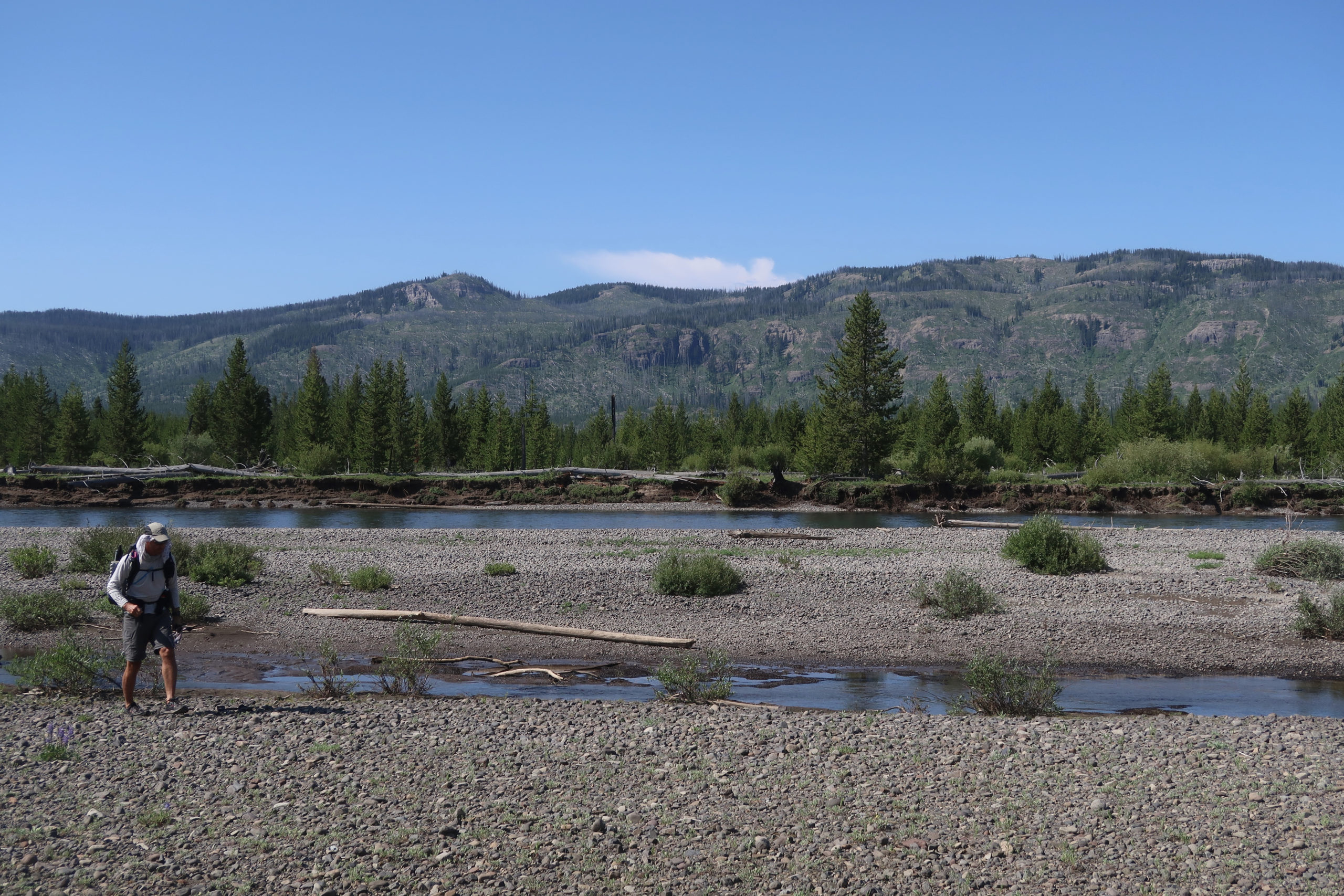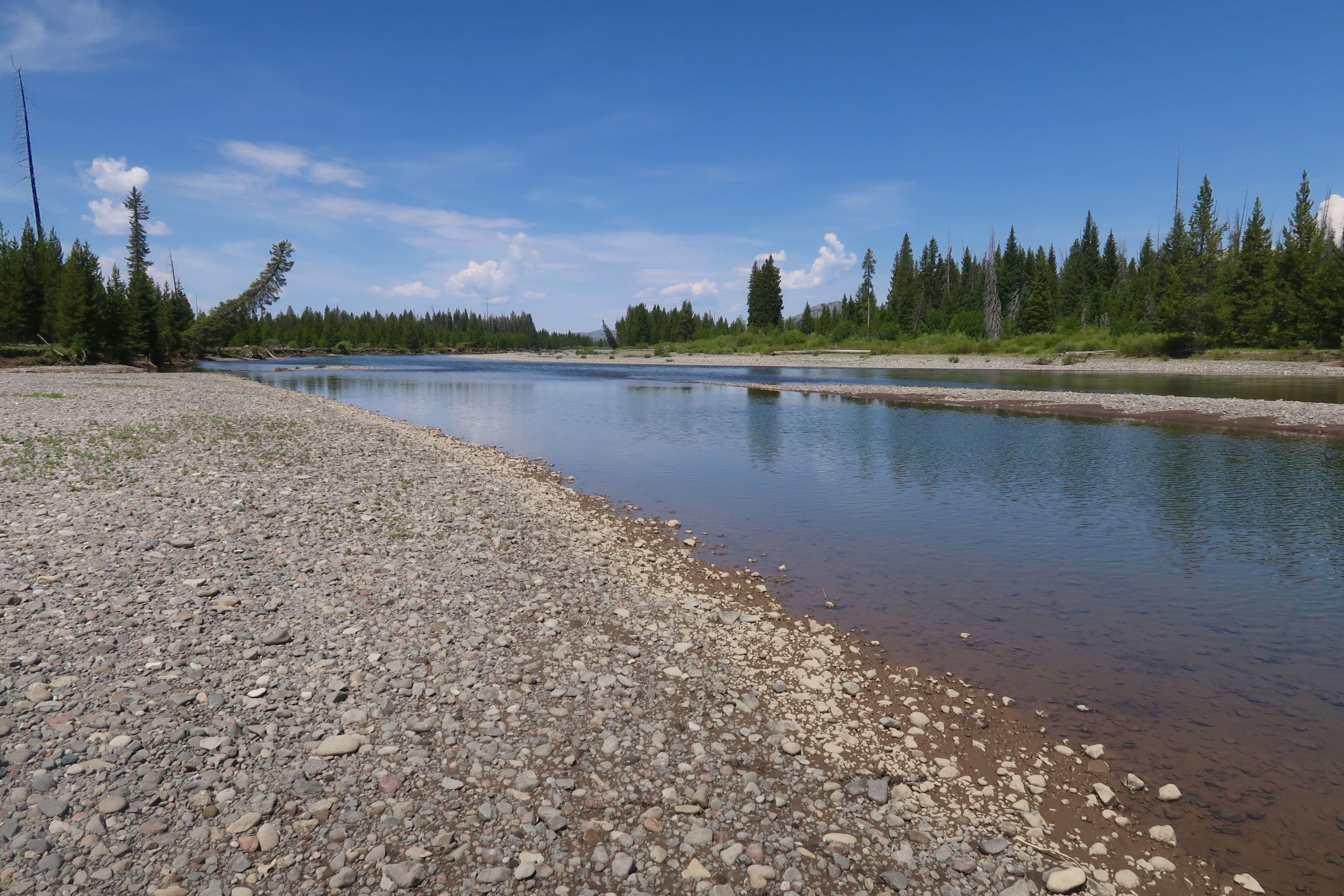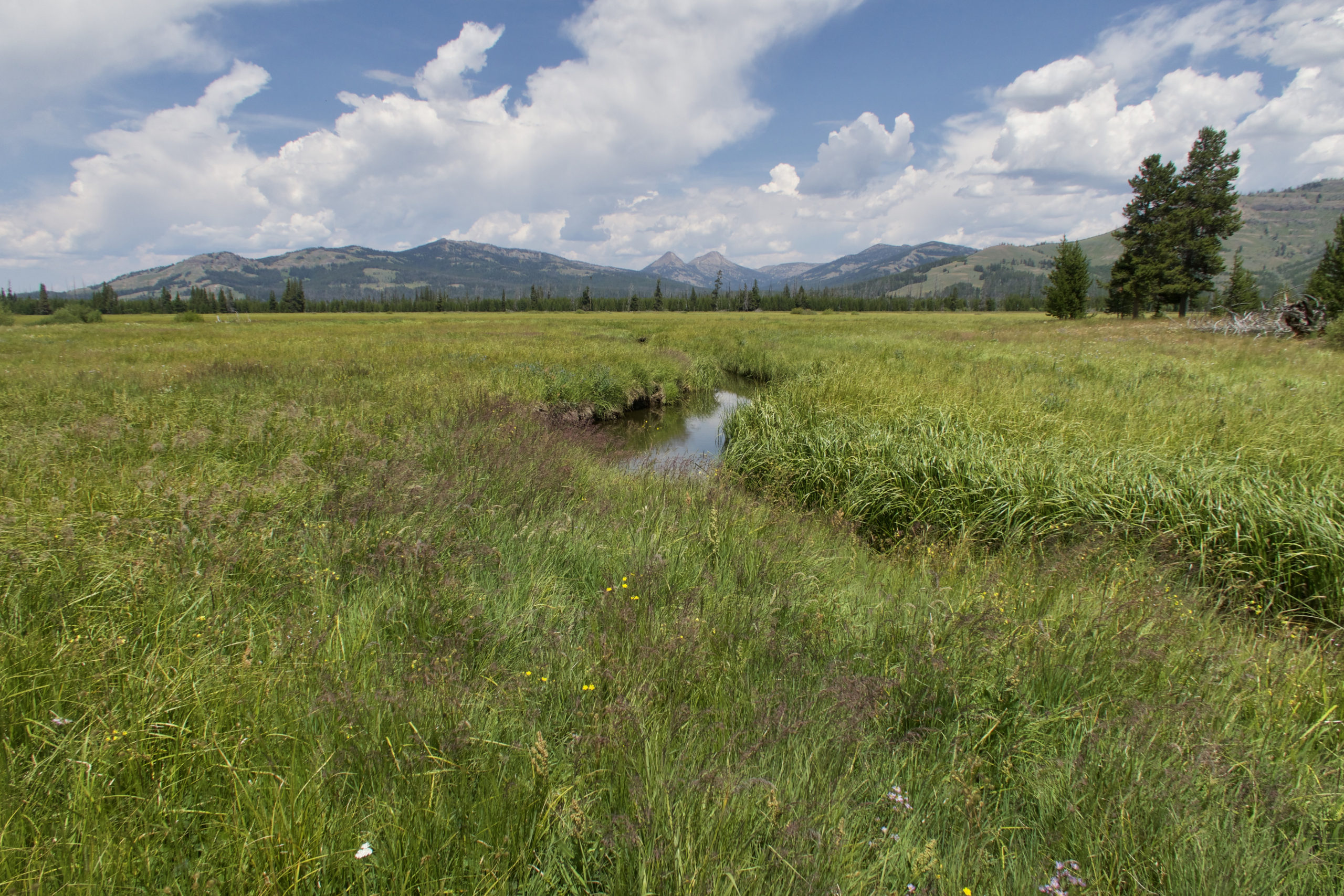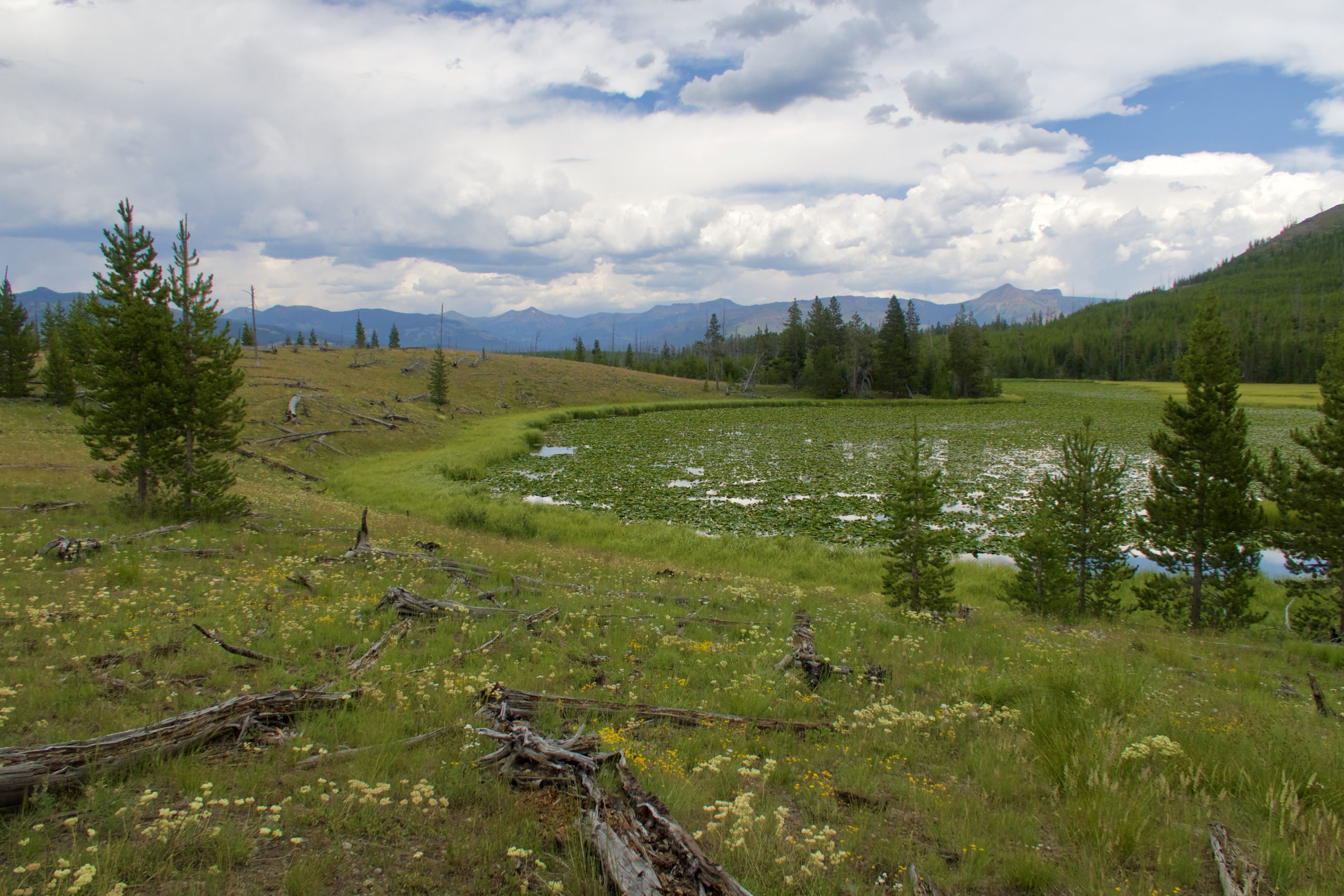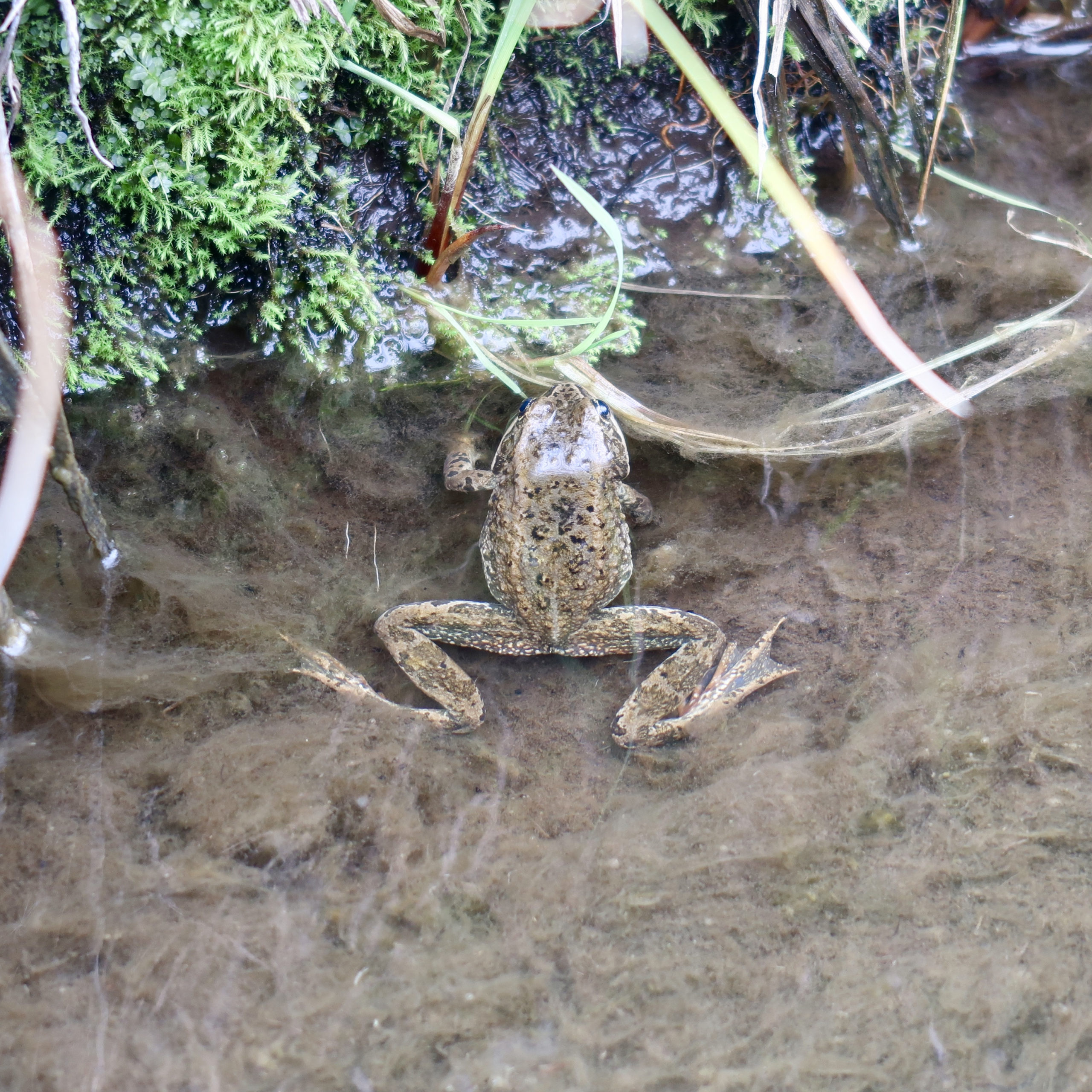Brimstone Basin to Grouse Creek
Rain in the morning gave way to sunny skies as we hiked down the east side of Yellowstone Lake. The trail was mostly in the forest, set back from the lake, but it popped out on the occasional promontory to yield outstanding views of the upper Yellowstone country.
We encountered several groups of hikers, all going from Heart Lake to the Ninemile TH (about 45 miles), and all toting enormous packs. Ultralight backpacking does not appear to be a thing here. All of them had crossed the Yellowstone at the Thorofare Ford near the Park’s south boundary. They reported water from knee to chest deep, depending on their exact path across the river. We are planning to cross at the Lower Ford just above the lake. The Thorofare Ford is several miles higher up and would be a significant detour if we are unable to cross at the Lower Ford.
The last group we saw was camped near the Yellowstone River and could scarcely credit that we had walked from our camp at Brimstone Basin (about 7 miles away) by 10 am. They also told us that large grizzlies were roaming the area and leaving sign everywhere. This was plausible enough as the valley is a succession of willow thickets and bogs, prime bear habitat. They were also surprised that we were planning to attempt the Lower Ford. It would be a challenge, and we might be the first to ford it this year.
Well, someone has to be first. Regardless, these were just two guys who thought that hiking seven miles in three hours on easy trail was some kind of remarkable feat. There was a good chance they had no idea what they were talking about. We made our way toward the ford, threading between and through willow thickets, stopping to shout loudly before we entered each one. We saw no bear sign but plenty of wolf tracks.
The river had dropped considerably but was still a big river. There were no rapids or falls, so the worst-case scenario is that we would lose our footing or step in a hole and go for a swim. Little danger of being snagged or trapped or smacked on rocks in fast water.
We repacked our packs, putting electronics and sleeping bags and warm clothes into ziploc bags and dry bags. We took our time scouting the ford, and found a route no more than waist-deep, though the smooth-flowing current was deceptively strong. We used proper fording technique: facing upstream, we side-stepped across, me in front to break the current, Dan behind holding on to my pack, ready to brace me if the current pushed me back. Fortunately the water was not leg-numbing cold. We made it across in a couple of minutes with no slips or scares. It was a challenge but – with proper preparation and technique – not a danger.
It being midday, we decided to lunch on the river. I broke out my Tenkara rod, as fishing the legendary upper Yellowstone was one of my goals for the trip. There was a decent deep pool above the ford, but my kebari fly excited no interest from any resident fish, whether fished dry and on top, or wet below the surface. Given the thicketty nature of the land along the banks, I was not comfortable moving far from the ford to fish. The chance of running into a grumpy bear was just too great. The Thorofare is the heartland of grizzly country, a place far from any roads, as wild a spot as exists in the lower 48. I needed to respect that, not chase up and down the banks looking for good fishing spots.
We finished up lunch and moved out, heading west now along the southern margins of Yellowstone Lake. The land here is low and flat, prone to flooding and swampiness. Our feet were soon soaked from frequent crossings of marshy areas, and stayed that way throughout the day.
We made plenty of noise at every brushy area and saw no bears. But we saw plenty of bear sign, causing Dan to remark “There must be a pile of bear shit every fifty yards on this trail”.
“Yeah, that is really inconsiderate. You’d think they could step off to the side, but no”.
“So rude”.
“Bears are the worst”.
“We should file a complaint with the rangers”.
We saw two bald eagles and numerous great blue herons but few mammals, mostly squirrels. There were ponds with lily pads.
And where there are lily pads, there also are frogs (no doubt being hunted by the herons).
We were in a truly wild place, one of the few temperate-zone intact ecosystems left in the US. People are scarce here, far outnumbered by bears and wolves. We had ventured far beyond any semblance of a man-made, or even man-friendly environment. It’s not that the environment was hostile. It was just indifferent. We were unremarkable specks in this place, an afterthought at best in the overall scheme. That was how it should be. It was what we had come for.
Clouds built through the afternoon and let loose a few showers as we approached our campsite near the southwestern corner of Yellowstone Lake. Although we had covered only 18 miles, it felt like much more – fording big rivers and navigating bogs is hard work. We made an early bed, grateful for the chance to lay down and rest, grateful to have come through a country as wild and beautiful as this one.



